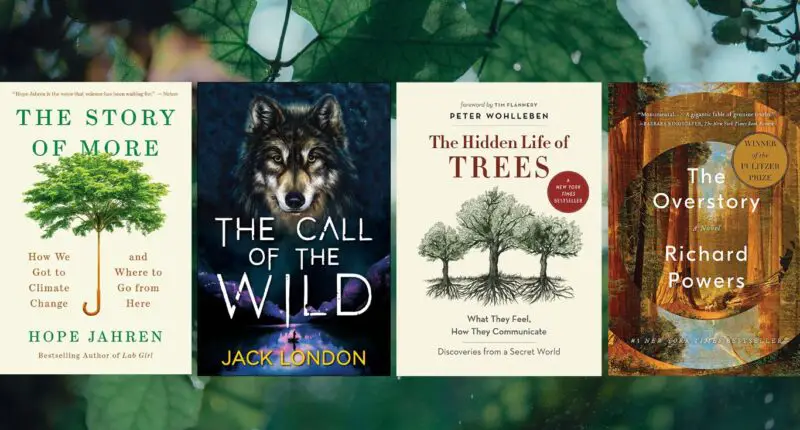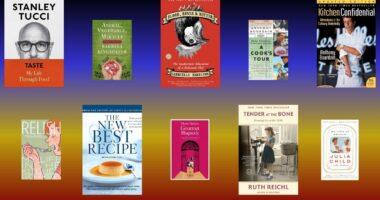In our increasingly digital age, the natural world feels both more remote and yet more crucial. For those yearning to connect with the wonders of nature, literature provides an insightful gateway. This collection introduces 20 must-read books for nature lovers, titles that beautifully encapsulate our planet’s diverse ecosystems and our profound relationships within them. These works, spanning fiction and non-fiction, unravel the intricate bond between humanity and nature. They provoke thought, inspire admiration, and challenge our perceptions. For outdoors enthusiasts, conservationists, or anyone who enjoys a contemplative read, these books promise a memorable journey into the heart of the natural world. Dive in, and let these pages transport you.
20 Must-Read Books For Nature Lovers
“Walden” by Henry David Thoreau

Immersed in nature’s tranquility, Henry David Thoreau delivers profound introspection and philosophy in “Walden.” This timeless masterpiece invites readers to reflect on life’s essentials, drawing from Thoreau’s two-year self-sustenance at Walden Pond. Chronicling the journey of simple living, individualism, and self-reliance, it explores the intricate beauty of the natural world. The book’s central themes emphasize liberation from societal constraints, seeking spiritual and existential fulfillment. It remains a critical and relevant commentary on humanity’s relationship with nature, urging sustainable existence.
“The Overstory” by Richard Powers
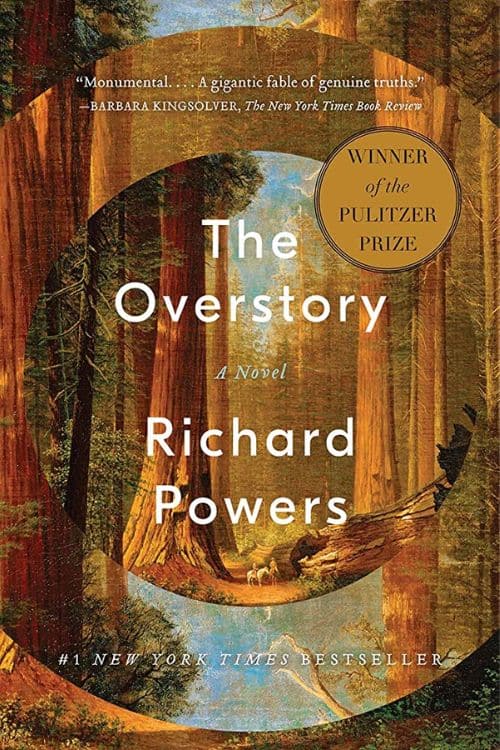
Exploring the interconnectedness of life, Richard Powers’ “The Overstory” unfolds an extraordinary narrative centered around trees and a diverse group of individuals. It intertwines their stories, guided by a shared purpose to protect the natural world from the onslaught of human development. Through meticulously crafted prose, the novel reveals a deep appreciation for nature, emphasizing the essential role trees play in earth’s ecosystem. This Pulitzer-winning work challenges conventional perspectives on time and biological life, stimulating profound reflection on humanity’s relationship with the environment. Ultimately, it suggests a paradigm shift towards an understanding that values and protects our shared planetary life.
“A Sand County Almanac” by Aldo Leopold
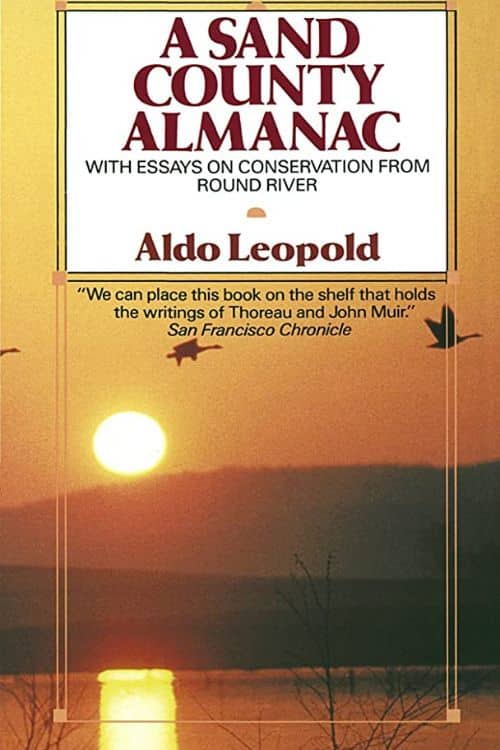
Aldo Leopold’s “A Sand County Almanac” is a vivid fusion of nature writing and environmental philosophy. Unfolding through seasonal changes, it transports readers into the heart of the American wilderness, spotlighting the intricate relationships within ecosystems. Leopold illustrates his experiences as an ecologist, infusing his observations with poignant reflections on conservation and ethics. The work’s keystone concept, the “Land Ethic,” posits that humans should extend their sphere of moral consideration to include the land. This pioneering manifesto continues to inspire dialogues about human responsibilities towards nature, reinforcing its enduring relevance.
“The Hidden Life of Trees” by Peter Wohlleben
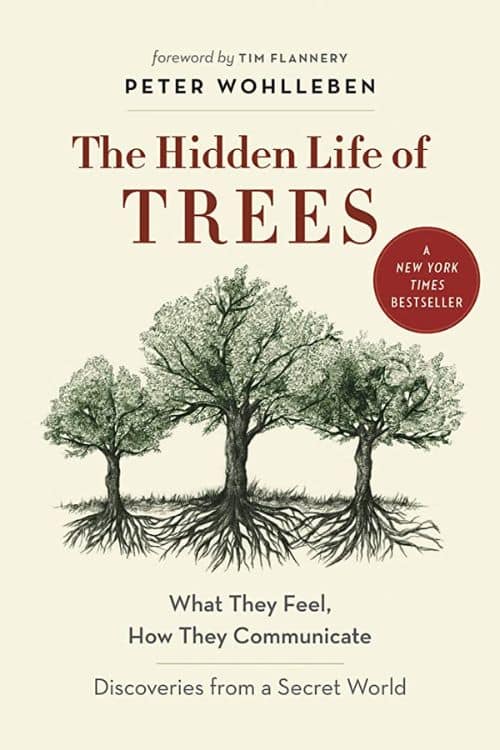
In “The Hidden Life of Trees,” Peter Wohlleben uncovers a fascinating world unseen by many – the social network of trees. Through a fusion of scientific facts and personal anecdotes, the book unveils complex behaviors of trees, from nurturing their kin to communicating via a ‘wood-wide web.’ It reimagines forests as dynamic, interconnected communities rather than collections of individual trees. Wohlleben’s accessible style demystifies scientific concepts, enabling a broad audience to appreciate the profound intelligence and emotional capabilities of trees. This groundbreaking work serves as a powerful call to respect and preserve our natural world.
“The Call of the Wild” by Jack London

Unleashing an intense exploration of nature and primal instincts, “The Call of the Wild” by Jack London is a gripping tale of survival and metamorphosis. The narrative follows Buck, a domesticated dog, violently uprooted from his comfortable California home and thrust into the harsh Yukon wilderness during the 1890s Klondike Gold Rush. London’s vivid and compelling prose paints a stark contrast between civilization and the wild, leading readers through Buck’s transformative journey of tapping into his inherent instincts to survive and ultimately thrive. It’s a timeless narrative, echoing the eternal conflict between nature and civilization.
“The Signature of All Things” by Elizabeth Gilbert

The book presents an exquisite tapestry of history, botany, and exploration. Its protagonist, Alma Whittaker, born in the dawn of the 19th century, embarks on a journey of self-discovery and understanding nature’s mysteries. Grounded in the intricate details of botany, her life mirrors the scientific and societal revolutions of her time. Gilbert’s lyrical prose and sharp historical details elevate Alma’s personal journey into a universal exploration of love, knowledge, and evolution. This work is a captivating blend of fact and fiction, a testament to human longing and the intricate patterns of nature.
“Pilgrim at Tinker Creek” by Annie Dillard

Annie Dillard’s “Pilgrim at Tinker Creek” is a profound exploration of the natural world that surrounds us, encapsulated in a series of meticulous and meditative observations. Set in Virginia’s Blue Ridge Mountains, the narrative follows Dillard’s philosophical and spiritual journey, akin to a modern-day Thoreau. The prose—rich with awe and curiosity—delves into the wonders and horrors of nature, revealing the paradoxes of the universe. Dillard masterfully intertwines scientific facts with personal reflections, making it a quintessential work in nature writing. This Pulitzer-winning book inspires readers to perceive the world with renewed appreciation and mindful awareness.
“Desert Solitaire” by Edward Abbey

It is a contemplative memoir that chronicles the author’s experiences as a park ranger in Utah’s Arches National Monument. His solitude in the desert landscape provides a profound and intimate understanding of the region’s rugged beauty and harsh realities. Abbey’s reflections range from biting criticism of industrial tourism and environmental degradation to poetic appreciations of the desert’s austere allure. The narrative amplifies the urgent call for preserving wild spaces against encroaching human development. With evocative descriptions and pointed insights, this seminal work continues to influence environmental discourse.
“The Sixth Extinction” by Elizabeth Kolbert

In “The Sixth Extinction,” Elizabeth Kolbert weaves a compelling narrative that sounds the alarm about the ongoing biodiversity crisis. Documenting the five previous mass extinctions, she argues we are in the midst of a sixth, primarily caused by human activities. Kolbert’s extensive research and firsthand reporting from far-flung locations underpin the urgent message of this Pulitzer-winning book. By juxtaposing past events with current ecological changes, she presents a sobering perspective on the profound impacts of human behavior on Earth’s life forms. This work is a critical read for understanding and addressing our planet’s pressing environmental challenges.
“Prodigal Summer” by Barbara Kingsolver

Barbara Kingsolver’s “Prodigal Summer” weaves together three stories of human life and love within the larger tapestry of nature’s rhythms and cycles. Set in the lush backdrop of southern Appalachia, the novel showcases the biodiversity of this region while exploring themes of ecological interdependence, the cycle of life, and the human need for connection. Kingsolver’s characters – a wildlife biologist, a young city girl, and a cantankerous farmer – each discover a deep connection to the land they inhabit. This intricate narrative celebrates nature’s abundance and resilience, offering readers a fresh perspective on the relationship between humans and the natural world.
“Underland: A Deep Time Journey” by Robert Macfarlane

Delving into the hidden depths beneath our feet, “Underland: A Deep Time Journey” by Robert Macfarlane is an awe-inspiring exploration of the Earth’s underworld. Through his immersive prose and lyrical storytelling, Macfarlane takes readers on a journey through subterranean landscapes, from cave systems to ancient burial chambers. He unravels the intricate connections between humans and the hidden realms, drawing on mythology, science, and personal experiences. With vivid descriptions and thought-provoking reflections, the book unveils the mysteries and wonders of the Earth’s hidden spaces, illuminating the importance of understanding and preserving the hidden ecosystems that lie beneath our everyday existence.
“Wild” by Cheryl Strayed

Cheryl Strayed’s “Wild: From Lost to Found on the Pacific Crest Trail” chronicles a transformative journey of self-discovery and healing. Following the author’s decision to hike over a thousand miles along the Pacific Crest Trail, the book recounts her physical and emotional challenges as she confronts personal demons and navigates the rugged wilderness. Strayed’s raw and introspective storytelling invites readers to share in her vulnerability, resilience, and ultimate triumph. Through her immersive narrative, she explores themes of nature’s redemptive power, the strength of the human spirit, and the search for meaning and belonging. “Wild” is a captivating memoir that inspires readers to embrace their own journeys of self-discovery and embrace the wildness within.
“The Outrun” by Amy Liptrot

Amy Liptrot’s “The Outrun” is a memoir that chronicles her journey from addiction to recovery, set against the backdrop of the remote Orkney Islands. Escaping the chaos of London, Liptrot seeks solace and redemption in the isolated and untamed natural landscape. Through her candid and evocative writing, she weaves together personal anecdotes, observations of wildlife, and reflections on the healing power of nature. “The Outrun” explores themes of self-discovery, resilience, and the profound connection between human well-being and the natural world. Liptrot’s memoir serves as a testament to the transformative potential of embracing wild spaces and finding solace in the rhythms of the earth.
“The Solace of Open Spaces” by Gretel Ehrlich

Gretel Ehrlich’s “The Solace of Open Spaces” captures the raw and captivating beauty of the Wyoming landscape and the author’s profound reflections on life, loss, and the solace found in nature. Ehrlich’s lyrical prose immerses readers in the vast expanse of the American West, where she discovers a sense of belonging and healing after experiencing personal tragedy. Through her encounters with the land, weather, and the resilient people who inhabit these open spaces, Ehrlich explores themes of solitude, resilience, and the interconnectedness of humans and the natural world. This book is a poignant and introspective meditation on finding solace, inspiration, and a sense of home in the vastness of the wild.
“Braiding Sweetgrass” by Robin Wall Kimmerer

In “Braiding Sweetgrass,” Robin Wall Kimmerer interweaves indigenous wisdom, scientific knowledge, and personal experiences to create a profound and uplifting exploration of our relationship with the natural world. Drawing on her background as a botanist and a member of the Citizen Potawatomi Nation, Kimmerer illuminates the reciprocal relationship between humans and the earth. She invites readers to embrace the teachings of plants and ecosystems, emphasizing the importance of reciprocity, gratitude, and stewardship. Through her exquisite storytelling, Kimmerer provides a vision for a more sustainable and interconnected future, where the gift of the earth is cherished and honored. “Braiding Sweetgrass” is a testament to the power of indigenous knowledge and a call to rekindle our kinship with the living world.
“The Story of More” by Hope Jahren

In “The Story of More: How We Got to Climate Change and Where to Go from Here,” Hope Jahren provides a comprehensive exploration of the origins and consequences of climate change. Through a blend of scientific analysis and personal anecdotes, Jahren navigates the complex web of factors that have led to our current environmental crisis. She addresses the underlying causes, such as population growth, consumption patterns, and technological advancements, while offering insights into potential solutions for a more sustainable future. With clarity and urgency, Jahren calls for collective action and individual responsibility to mitigate the impacts of climate change. “The Story of More” is an enlightening and thought-provoking guide that empowers readers to make informed choices and become part of the solution.
“The Uninhabitable Earth: Life After Warming” by David Wallace-Wells

In “The Uninhabitable Earth: Life After Warming,” David Wallace-Wells delivers a gripping and alarming exploration of the consequences of climate change. Drawing from scientific research and expert interviews, he presents a sobering portrayal of the potential impacts of a warming planet. From rising temperatures and extreme weather events to food scarcity and mass migrations, Wallace-Wells vividly illustrates the scale of the challenges ahead. Despite the grim outlook, he emphasizes the importance of confronting the crisis head-on and highlights potential pathways to mitigate the worst outcomes. “The Uninhabitable Earth” serves as a wake-up call, urging readers to take immediate action and envision a more sustainable future for our planet.
“Last Child in the Woods” by Richard Louv
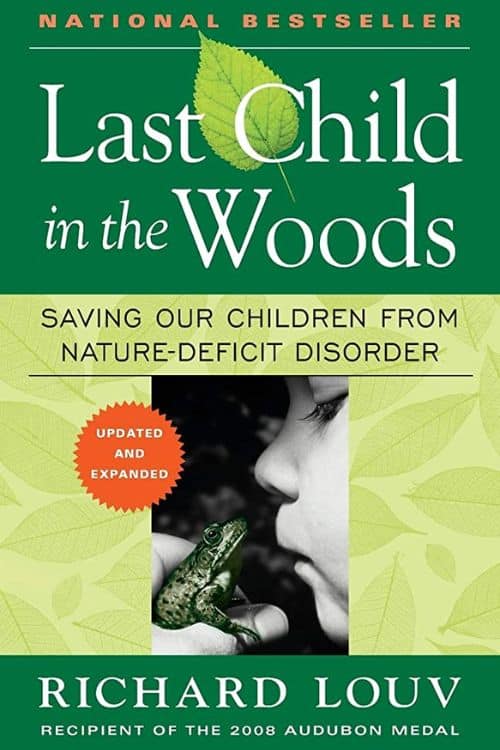
Richard Louv’s “Last Child in the Woods” illuminates the consequences of the growing disconnect between children and nature in the modern world. Louv explores the detrimental effects of a “nature-deficit disorder,” highlighting the physical, emotional, and cognitive benefits that children gain from spending time in the natural world. Drawing on scientific research and personal anecdotes, he advocates for rekindling the bond between children and nature, encouraging parents, educators, and policymakers to prioritize outdoor experiences. This groundbreaking book serves as a rallying cry to protect and preserve wild spaces and to nurture the next generation’s connection with the natural world, fostering healthier and more environmentally conscious individuals.
“The Invention of Nature: Alexander von Humboldt’s New World” by Andrea Wulf

In “The Invention of Nature: Alexander von Humboldt’s New World,” Andrea Wulf sheds light on the remarkable life and scientific contributions of Alexander von Humboldt. This captivating biography traces Humboldt’s expeditions across the Americas, where he meticulously documented and studied the natural world. Wulf skillfully captures Humboldt’s immense curiosity and his pioneering approach to interdisciplinary research, which laid the foundation for modern environmental science. Through vivid storytelling, she reveals Humboldt’s profound impact on the scientific community and his advocacy for understanding the interconnectedness of nature. “The Invention of Nature” is a tribute to a visionary scientist whose ideas continue to resonate and inspire environmentalists and nature enthusiasts today.
“The Sea Around Us” by Rachel Carson
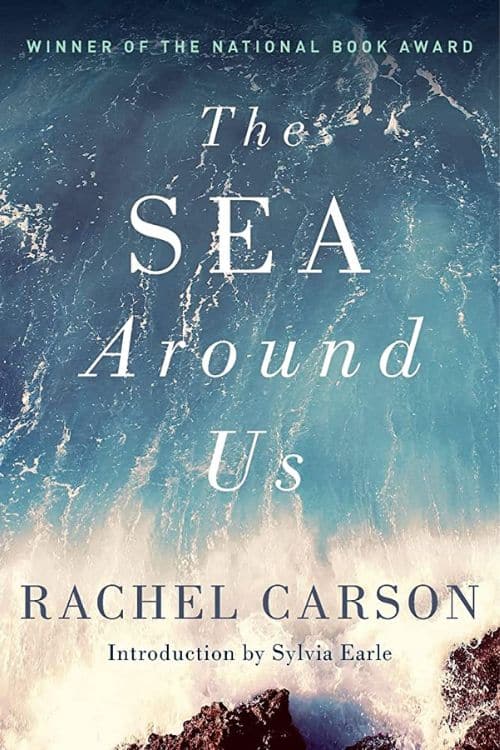
Rachel Carson’s “The Sea Around Us” is a seminal work that delves into the wonders of the world’s oceans. With lyrical prose and meticulous research, Carson explores the intricate ecological balance and the importance of the seas to the planet’s overall health. Through captivating storytelling and scientific insights, she reveals the profound influence of the oceans on climate, weather patterns, and the existence of life itself. Carson’s work not only informs readers about marine ecosystems but also raises awareness about the environmental threats they face. “The Sea Around Us” remains a timeless tribute to the magnificence of the oceans and a call to protect these invaluable resources.
Also Read: 15 Bestselling Books Penned by Indian Authors You Can’t Miss
